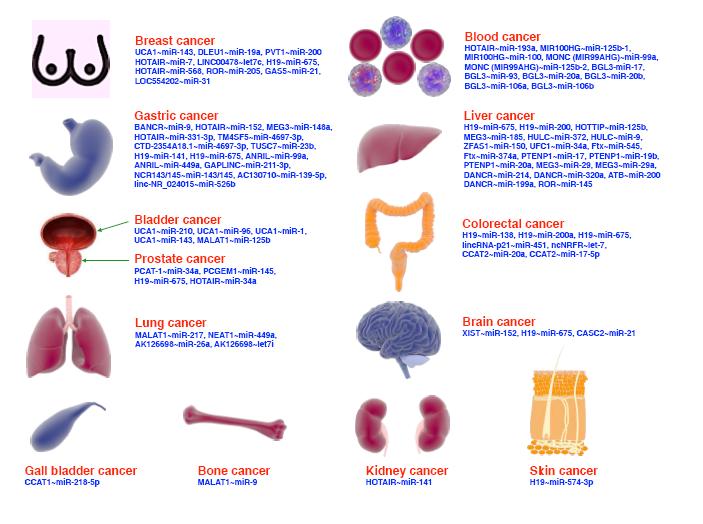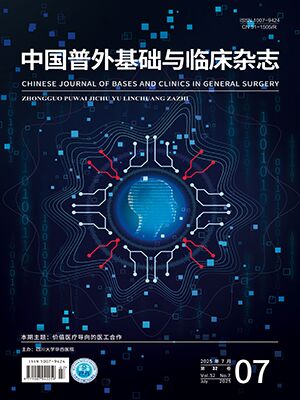【Abstract】Objective To study the antitumor activity of HSVtk/CD combinative gene toward human cholangiocarcinoma in vivo. Methods Nude mouse models with transplanted subcutaneous cholangiocarcinoma were constructed and divided into 4 groups randomly, each group had 8 mice. Adenovirus solution free from suicide gene was injected in subcutaneous tumors of each mouse of control group. Adenovirus solution containing cytosine deaminase (CD), thymidine kinase (tk) and HSVtk/CD fusional gene were injected into single suicide gene either HSVtk or CD was transinfected into the tumor cells by injecting viras into subcutaneous tumor of mice of CD gene,tk gene and fused CD and tk gene group respectively. 24 hours after the injection, 5fluorocytosine (5FC) and ganciclovir (GCV) were injected introabdominally in each mouse. Growth of the tumors were monitored.Results Tumor growth of the genetransfection groups was suppressed in different degrees. Compared with the control group, the suppressing rates of the genetransfection groups were 41.2%, 55.7% and 70.0% respectively (P<0.05). Histological examination showed good tumor growth in the control group, and tumor necrosis in the other 3 groups, particularly obvious in the group transfected with pAd(HSVtk/CD).Conclusion Combinative gene system has a b antitumor effect on cholangiocarcinoma in vivo. But it’s not powerful enough to eliminate tumor thoroughly because of insufficient “Bystander effect”.
Citation:
LI Meisheng,LIANG Lijian,HUANG Jiefu,HU Wenjie,ZENG Zuojun.. In Vivo Antitumor Activity of HSV
tk/CD Combinative Gene Toward Human Cholangiocarcinoma Cells(QBC939). CHINESE JOURNAL OF BASES AND CLINICS IN GENERAL SURGERY, 2005, 12(6): 581-584. doi:
Copy
Copyright © the editorial department of CHINESE JOURNAL OF BASES AND CLINICS IN GENERAL SURGERY of West China Medical Publisher. All rights reserved
| 1. |
1 Namba H, Tagawa M, Miyagawa T, et al. Treatment of rat experimental brain tumors by herpes simplex virus thymidine kinase gene
transduced allogeneic tumor cells and ganciclovir [J]. Cancer Gene Ther, 2000; 7(6)9472 Huber BE, Austin EA, Good SS, et al. In vivo antitumor activity of 5fluorocytosine on human colorectal carcinoma cells genetically modified to express cytosine deaminase [J]. Cancer Res, 1993; 53(19)46193 Tanaka T, Kanai F, Okabe S, et al. Adenovirusmediated prodrug gene therapy for carcinoembryonic antigenproducing human gastric carcinoma cells in vitro [J]. Cancer Res, 1996; 56(6)13414 Cool V, Pirotte B, Gerard C, et al. Curative potential of herpes simplex virus thymidine kinase gene transfer in rats with 9L gliosarcoma [J]. Hum Gene Ther, 1996; 7(5)6275 Uckert W, Kammertons T, Haack K, et al. Double suicide gene (cytosine deaminase and herpes simplex virus thymidine kinase) but not single gene transfer allows reliable elimination of tumor cells in vivo [J]. Hum Gene Ther, 1998; 9(6)8556 Rogulski KR, Wing MS, Paielli DL, et al. Double suicide gene therapy augments the antitumor activity of a replicationcompetent lytic adenovirus through enhanced cytotoxicity and radiosensitization [J]. Hum Gene Ther, 2000; 11(1)677 魏道严,糜军,陈诗书. 细菌内同源重组法高效制备含CD、TK融合自杀基因重组体腺病毒 [J]. 癌症, 2000; 19(5)3998 Klatzmann D, Valery CA, Bensimon G, et al. A phase I/II study of herpes simplex virus type 1 thymidine kinase “suicide” gene therapy for recurrent glioblastoma. Study Group on Gene Therapy for Glioblastoma [J]. Hum Gene Ther, 1998; 9(17)25959 Shand N, Weber F, Mariani L, et al. A phase 1-2 clinical trial of gene therapy for recurrent glioblastoma multiforme by tumor transduction with the herpes simplex thymidine kinase gene followed by ganciclovir. GLI328 European-Canadian Study Group [J]. Hum Gene Ther, 1999; 10(14)232510 Palu G, Cavaggioni A, Calvi P, et al. Gene therapy of glioblastoma multiforme via combined expression of suicide and cytokine genes: a pilot study in humans [J]. Gene Ther, 1999; 6(3)330.
|
- 1. 1 Namba H, Tagawa M, Miyagawa T, et al. Treatment of rat experimental brain tumors by herpes simplex virus thymidine kinase gene
transduced allogeneic tumor cells and ganciclovir [J]. Cancer Gene Ther, 2000; 7(6)9472 Huber BE, Austin EA, Good SS, et al. In vivo antitumor activity of 5fluorocytosine on human colorectal carcinoma cells genetically modified to express cytosine deaminase [J]. Cancer Res, 1993; 53(19)46193 Tanaka T, Kanai F, Okabe S, et al. Adenovirusmediated prodrug gene therapy for carcinoembryonic antigenproducing human gastric carcinoma cells in vitro [J]. Cancer Res, 1996; 56(6)13414 Cool V, Pirotte B, Gerard C, et al. Curative potential of herpes simplex virus thymidine kinase gene transfer in rats with 9L gliosarcoma [J]. Hum Gene Ther, 1996; 7(5)6275 Uckert W, Kammertons T, Haack K, et al. Double suicide gene (cytosine deaminase and herpes simplex virus thymidine kinase) but not single gene transfer allows reliable elimination of tumor cells in vivo [J]. Hum Gene Ther, 1998; 9(6)8556 Rogulski KR, Wing MS, Paielli DL, et al. Double suicide gene therapy augments the antitumor activity of a replicationcompetent lytic adenovirus through enhanced cytotoxicity and radiosensitization [J]. Hum Gene Ther, 2000; 11(1)677 魏道严,糜军,陈诗书. 细菌内同源重组法高效制备含CD、TK融合自杀基因重组体腺病毒 [J]. 癌症, 2000; 19(5)3998 Klatzmann D, Valery CA, Bensimon G, et al. A phase I/II study of herpes simplex virus type 1 thymidine kinase “suicide” gene therapy for recurrent glioblastoma. Study Group on Gene Therapy for Glioblastoma [J]. Hum Gene Ther, 1998; 9(17)25959 Shand N, Weber F, Mariani L, et al. A phase 1-2 clinical trial of gene therapy for recurrent glioblastoma multiforme by tumor transduction with the herpes simplex thymidine kinase gene followed by ganciclovir. GLI328 European-Canadian Study Group [J]. Hum Gene Ther, 1999; 10(14)232510 Palu G, Cavaggioni A, Calvi P, et al. Gene therapy of glioblastoma multiforme via combined expression of suicide and cytokine genes: a pilot study in humans [J]. Gene Ther, 1999; 6(3)330.
Journal type citation(6)
| 1. | 刘小刚,李甜,张舵. 组织工程支架在耳廓重建中的研究进展. 中国美容医学. 2022(02): 161-166 .  Baidu Scholar Baidu Scholar | |
| 2. | 陈语嫣,史廷春,岳秀艳. 微载体技术在软骨损伤修复中的应用与展望. 生物工程学报. 2022(03): 925-942 .  Baidu Scholar Baidu Scholar | |
| 3. | 曹国定,裴豫琦,刘军,李鹏,刘鹏,李旭升. 骨缺损修复材料的研究进展. 中国骨伤. 2021(04): 382-388 .  Baidu Scholar Baidu Scholar | |
| 4. | 陆定贵. 软骨组织工程的研究现状及间充质干细胞的修复策略. 微创医学. 2021(03): 307-311 .  Baidu Scholar Baidu Scholar | |
| 5. | 王涛,彭吾训,张飞,郑应刚,王贞文,袁大江. NMNAT3调节NAD~+水平对兔BMSCs线粒体功能及其抗氧化应激能力影响的研究. 中国修复重建外科杂志. 2020(05): 621-629 .  Baidu Scholar Baidu Scholar | |
| 6. | 熊莹,许燕,周建平,张旭婧,王恪典. 组织工程研究中的电活性生物材料. 中国组织工程研究. 2019(34): 5523-5530 .  Baidu Scholar Baidu Scholar | |
Other types of references(11)
| 1. | 刘宁. 小分子化合物kartogenin对大鼠低位髌骨诱导的髌股关节退变的实验研究[D]. 华北理工大学. 2019.  Baidu Scholar Baidu Scholar | |
| 2. | 侯雨非. 结合骨髓刺激与原位打印的膝关节软骨缺损微创修复方法[D]. 浙江大学. 2024.  Baidu Scholar Baidu Scholar | |
| 3. | 黄树森. 负载SDF-1α和TGF-β1的丝素蛋白-明胶海绵复合多孔支架的构建及其软骨修复作用的初步研究[D]. 暨南大学. 2019.  Baidu Scholar Baidu Scholar | |
| 4. | 朱聪. 间歇式轴向压应力对组织工程骨种子细胞黏附增殖与成骨分化能力的影响研究[D]. 厦门大学. 2019.  Baidu Scholar Baidu Scholar | |
| 5. | 凌昊楠. Ad-TGFβ1感染BMSCs黏附3D打印PLA支架修复兔膝关节软骨缺损的实验研究[D]. 遵义医科大学. 2020.  Baidu Scholar Baidu Scholar | |
| 6. | 刘笑颖. BMP2/7与双糖链蛋白多糖联合诱导成骨的研究[D]. 华北理工大学. 2023.  Baidu Scholar Baidu Scholar | |
| 7. | 曹国定. 电纺PLGA/MSNs复合纤维支架的构建及性能研究[D]. 甘肃中医药大学. 2021.  Baidu Scholar Baidu Scholar | |
| 8. | 柳家明. 用于骨肉瘤术后修复的双载药缓释给药系统的研究[D]. 武汉理工大学. 2023.  Baidu Scholar Baidu Scholar | |
| 9. | 郭华超. 改性HAw仿生骨组织工程支架制备及应用基础研究[D]. 昆明理工大学. 2019.  Baidu Scholar Baidu Scholar | |
| 10. | 朱煜华. 多孔中空羟基磷灰石微球的制备及其生物医学评价[D]. 太原理工大学. 2022.  Baidu Scholar Baidu Scholar | |
| 11. | 邢飞. 负载尿源性干细胞的图案化3D打印支架用于骨缺损修复的实验研究[D]. 四川大学. 2021.  Baidu Scholar Baidu Scholar | |





 Baidu Scholar
Baidu Scholar